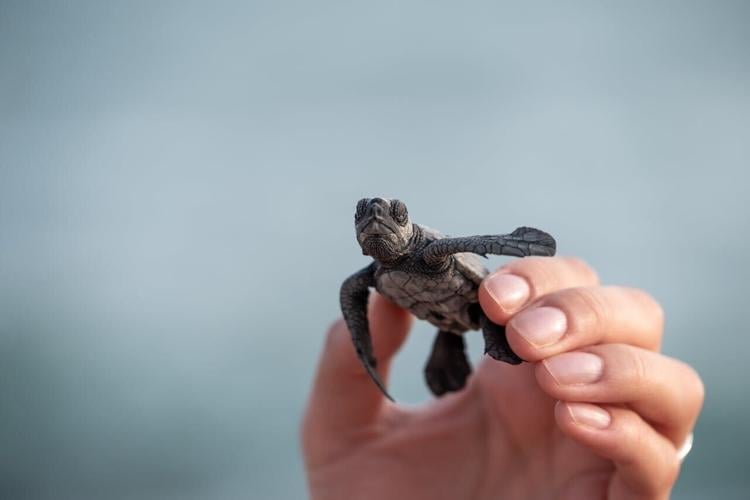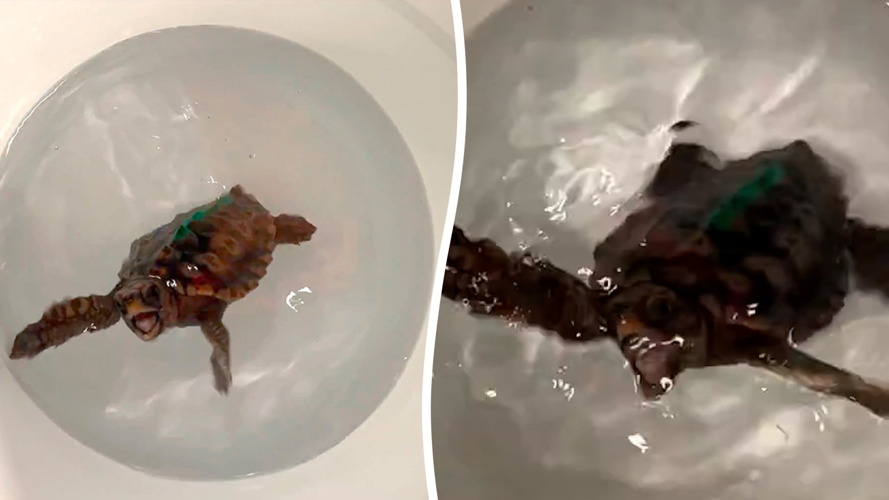
Photo by Ludvig Hedenborg via Pexels
By Stephen Beech
Young turtles "feel" magnetism to navigate, according to new research.
Hatchling loggerhead turtles are able to sense the Earth’s magnetic field when using a magnetic "map" during their epic migrations, say scientists.
They explained that the marine reptiles are able to detect the magnetic field in two ways.
But it wasn’t clear which sense the turtles use to sense it when navigating using the magnetic map they are born with.
Now, American scientists have discovered that hatchling loggerhead turtles feel the Earth’s magnetic field to tell them where they are on their epic migration routes.
Setting off from the beach of their birth, hatchling loggerhead turtles embark on some of the world’s longest migrations, covering thousands of miles over decades.
But the intrepid youngsters are not without direction, according to the new study published in the Journal of Experimental Biology.
Equipped with the ability to sense the Earth’s magnetic field, loggerhead hatchlings are born with a compass, which tells them in which direction they are traveling, and a map of the planet’s magnetic field that tells them their location, to navigate successfully.
The research team from the University of North Carolina at Chapel Hill explained that there are two possible ways for animals to sense the Earth’s magnetic field.
One is where light-sensitive molecules are affected by the magnetic field, which could allow animals to see the field.

(SWNS)
The second is where tiny magnetite crystals embedded in the animal’s body move in the field to allow them to feel the magnetism.
But it wasn’t clear which of the two mechanisms might tell turtles where they are located during their extraordinary odyssey.
The North Carolina team had recently discovered that hatchling turtles can learn to associate the magnetic field found at a location with the arrival of food.
But instead of learning to salivate, the researchers found that loggerhead turtle hatchlings "dance" to show their recognition, tilting their bodies out of the water, opening their mouths and waggling their front flippers.
By locating the youngsters in a specific magnetic field while feeding them, the team were able to train the hatchlings to perform their dance when transferred later to the same magnetic field.
Doctoral student Alayna Mackiewicz said: "They are very food motivated and eager to dance when they think there is a possibility of being fed."
The researchers realized that they could use the trick to tell whether the turtles were potentially seeing, or feeling, the Earth’s magnetic field if they zapped the hatchlings with a strong magnetic pulse that temporarily disabled their ability to feel the field.
Mackiewicz said: "If the zapped hatchlings stopped dancing, then they were feeling the magnetic field, but if they continued to dance, then they were using some other sense to detect the magnetic map."
But she said training the hatchlings was no mean feat.

Photo by Lachlan Ross via Pexels
Mackiewicz spent two months with fellow doctoral student Dana Lim feeding eight newly hatched loggerhead youngsters in the magnetic field that is found around the Turks and Caicos islands, so they would learn to dance when they experienced the magnetic field later.
The duo also trained other hatchlings to recognize the magnetic field near Haiti.
Mackiewicz said: "It’s really fun, but takes up quite a bit of time."
The researchers transferred each youngster to a large metal coil that produced a strong magnetic pulse that would temporarily disable the hatchling’s ability to feel a magnetic field.
They then placed each youngster in the magnetic field that they had been trained to recognize to find out whether they had stopped dancing.
After being zapped, the turtles danced less, suggesting that they were feeling the magnetic field, which tells them where they are on their map, and not seeing it.
The research team admits that the hatchlings may also use other senses to tell them where they are located on their global magnetic map, but say feeling the field is an "essential" component of their ability.
Mackiewicz added: "As the youngsters are known to use their additional magnetic sense – which may enable them to see magnetic fields – as a compass that tells them in which direction they are travelling, it is clear that the two senses complement each other, allowing the youngsters to identify their location and set a bearing wherever they might be."























(0) comments
Welcome to the discussion.
Log In
Keep it Clean. Please avoid obscene, vulgar, lewd, racist or sexually-oriented language.
PLEASE TURN OFF YOUR CAPS LOCK.
Don't Threaten. Threats of harming another person will not be tolerated.
Be Truthful. Don't knowingly lie about anyone or anything.
Be Nice. No racism, sexism or any sort of -ism that is degrading to another person.
Be Proactive. Use the 'Report' link on each comment to let us know of abusive posts.
Share with Us. We'd love to hear eyewitness accounts, the history behind an article.